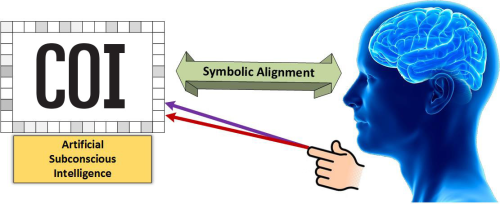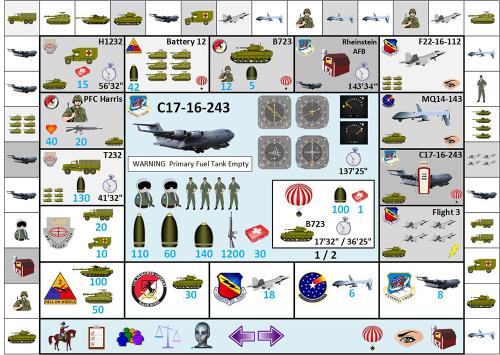- Image

AI in the Military
According to Verified Market Research, the Global Military Artificial Intelligence (AI) Market is projected to grow at a CAGR of 14.49% from 2024 to 2031. The market was valued at USD 13.24 Billion in 2024 and is expected to reach USD 35.54 Billion in 2031. This is amidst a strong industrial expansion.
This economic activity is reflected in the collection and preparation of large number of images when tracking enemy armored vehicles of interest, for instance. These images must match a slew of conditions - light, differing angles, limited exposure. The data then needs to be prepared by analysts for AI training.
The sheer amount of data required to develop an AI system creates vulnerability. The volume of data means that analysts do not have the capacity to verify every collected image is an actual enemy armored vehicle or that the images represent the full range of types of vehicles. These AI systems also experience data drift that happens in systems where everyone gets bad data after time.
An evasion operation usually occurs from the enemy that targets how the AI’s learning is applied. For instance, this is exemplified in the following link where traditional object detection was avoided by visual trickery. Compounding challenges AI recognition systems don’t understand what the image is, they simply learn textures and gradients of the image’s pixels. This lack of understanding can result in misclassifications, such as identifying a boat on a lake as a BMP.
Most of what occurs inside an AI system is a black box and there is very little that a human can do to understand how the system makes decisions. This is a critical problem for high-risk systems such as those that make engagement decisions or whose output may be used in critical decision-making processes. Many AI systems are not capable of transferring their learning within the same domain. For example, a system trained to identify a T-90 tank would most likely be unable to identify a Chinese Type 99 tank, despite the fact that they are both tanks. Also, AI systems lack the ability to multi-task.
Signal Edge’s Neuro-Symbolic AI is scalable, explainable, repeatable, adaptable. Our AI is taught during operations to make human-level decision-making. Our unifying framework offers the basis to take the vast knowledge produced from different military AI systems, and offer a rational review process that produces the military intelligence needed. Specifically:
 DOD Concern. To recognize adaptive threats, data must be recent and in a state of readiness. Digitization must precede AI development. Most wargames are not conducted in a digital environment and do not generate electronic data.
DOD Concern. To recognize adaptive threats, data must be recent and in a state of readiness. Digitization must precede AI development. Most wargames are not conducted in a digital environment and do not generate electronic data.
By using our ByteWiseIoT Teleporter Signal Edge military signal transmit entropy only. This technique allows knowledge to transfer through a software framework with little to no data requirements increasing infrastructure efficiency by a minimum of 10,000%. This is done through a Data Distribution System (DDS) provides all the traditional characteristics of Data Readiness (accessible, representable, trustworthy).
DOD Concern. AI classification algorithms cannot be relied on to learn what they are not taught. AI did not anticipate or recognize new kinds of cyberattacks, for instance. AI is far from achieving human-level intelligence. Therefore, it cannot stand in for humans, nor can it apply human judgments.
 Signal Edge's Artificial Subconscious IntelligenceTM (ASI) is driven by a human operator (executive control) to enhance a user’s intelligence and capability. Our Cognitive Object Interface (COI) accelerates ASI reinforcement learning where our game interface, based on survival, continually trains and refines the process. This enables the ASI to produce operational analytics and automation.
Signal Edge's Artificial Subconscious IntelligenceTM (ASI) is driven by a human operator (executive control) to enhance a user’s intelligence and capability. Our Cognitive Object Interface (COI) accelerates ASI reinforcement learning where our game interface, based on survival, continually trains and refines the process. This enables the ASI to produce operational analytics and automation.
 DOD Concern. Mission planning requires the development of infrastructure that efficiently connects a simulation environment with an AI framework. To enable AI, human-computer interaction (HCI) technology is needed to capture aspects of wargaming that are not captured today.
DOD Concern. Mission planning requires the development of infrastructure that efficiently connects a simulation environment with an AI framework. To enable AI, human-computer interaction (HCI) technology is needed to capture aspects of wargaming that are not captured today.
Signal Edge’s COI product reconstructs an activity. Displaying an activity as a series of symbolic objects in an artificial reality (AR). Signal Edge’s COI displays activity through tiles that contain symbols filtering out unnecessary info in order to focus on the objects that need decision-making.
 This notifies the user, i.e., an Army Specialist, when objects need attention. This also tracks all out-of-focus activities and informs the user when these objects need attention. The COI captures content knowledge, produces both symbolic and general intelligence.
This notifies the user, i.e., an Army Specialist, when objects need attention. This also tracks all out-of-focus activities and informs the user when these objects need attention. The COI captures content knowledge, produces both symbolic and general intelligence.
COI - a new perspective for understanding, managing and reacting to computer data.
